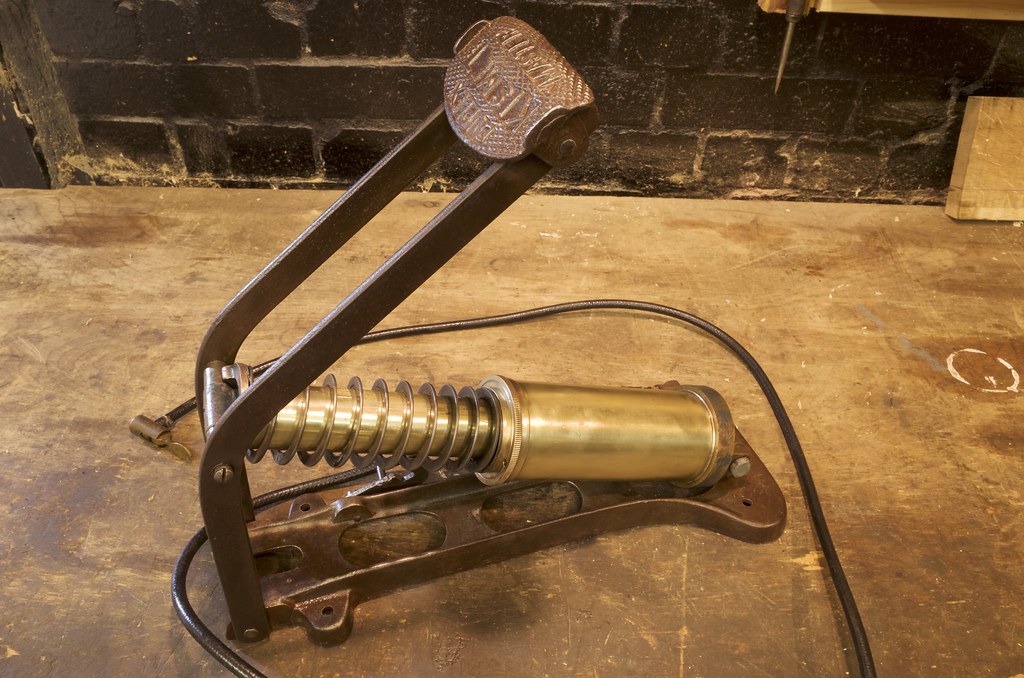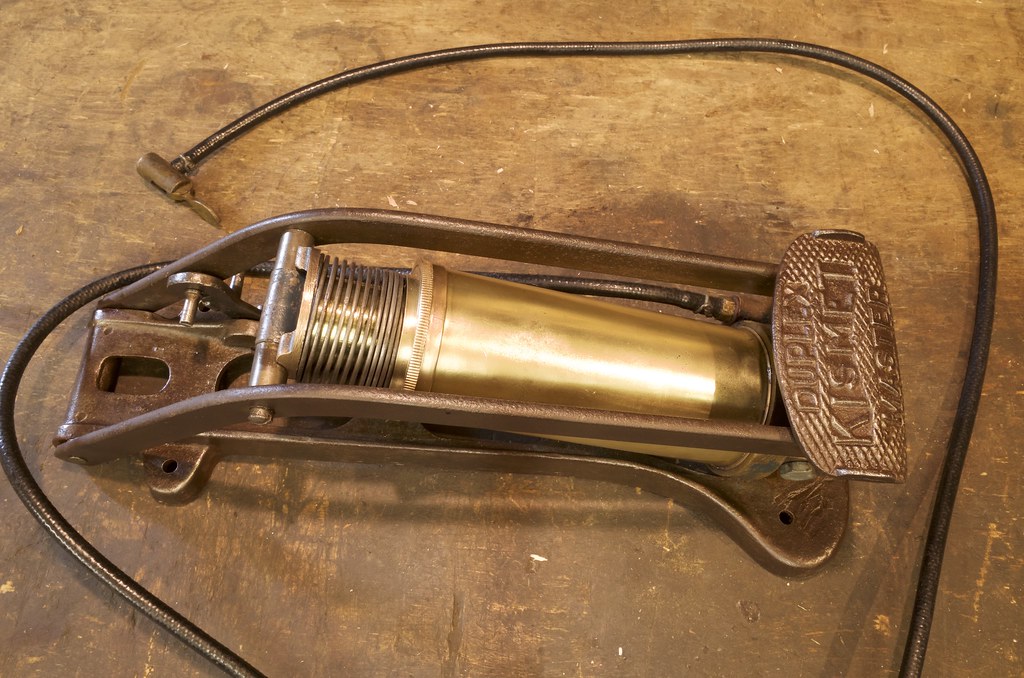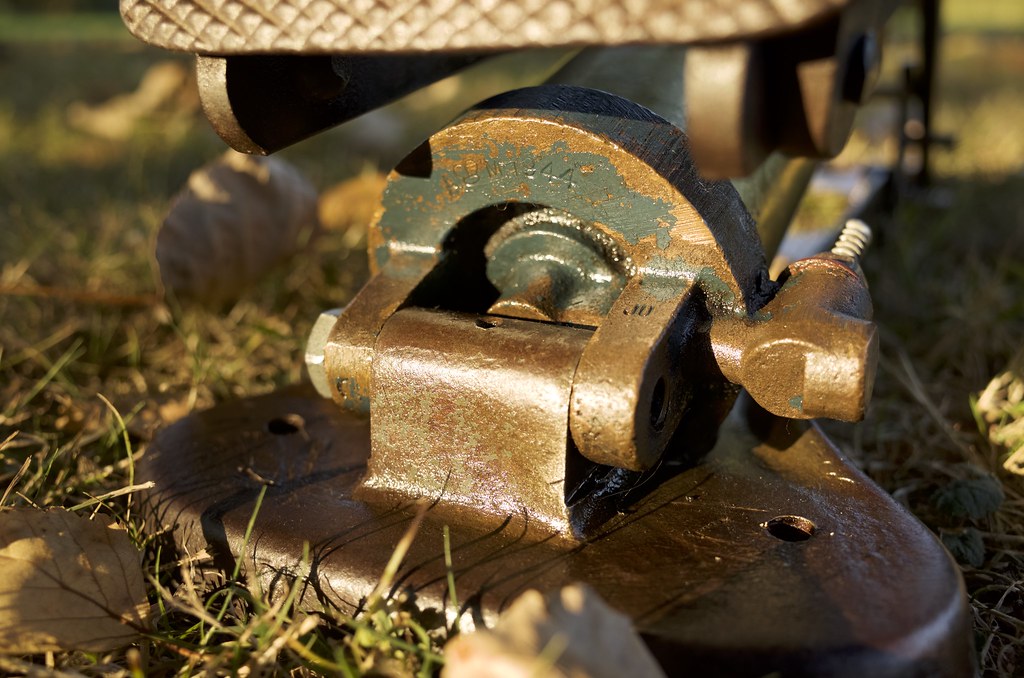Rhyolith
Established Member
I must have restored around 20 of these brass foot pumps now! This one is particularly special though, firstly because its flipping massive at 17 1/2" long and secondly it still has its box!
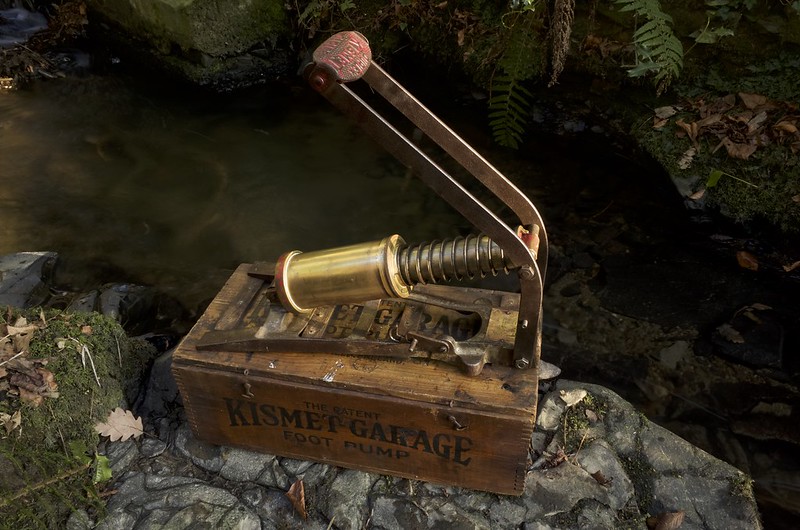 Kismet Duplex Garage by Rhyolith, on Flickr
Kismet Duplex Garage by Rhyolith, on Flickr
It makes sense given the name that these where used for fill the roll and powered compressor now does in many garages, sacrificing mobility for pumping capacity. As I am guessing that the ability to get tyres pumped up quickly is desirable for a commercial garage, while the lack of mobility does not really matter as the pump probably sat in the same place or on a trolly.
It has the same "duplex" internal layout as the Kismet Master, that being on cylinder inside the other allowing for higher pressures to be achieved (everything from 300-600psi is claimed by various sources). The Air is draw into a large external cylinder first, then that air (which is already pressurised) is sucked into a second smaller cylinder and compressed again. Its a powerful system that was used in a number of top-of the line foot pumps in the first half of the 20th century.
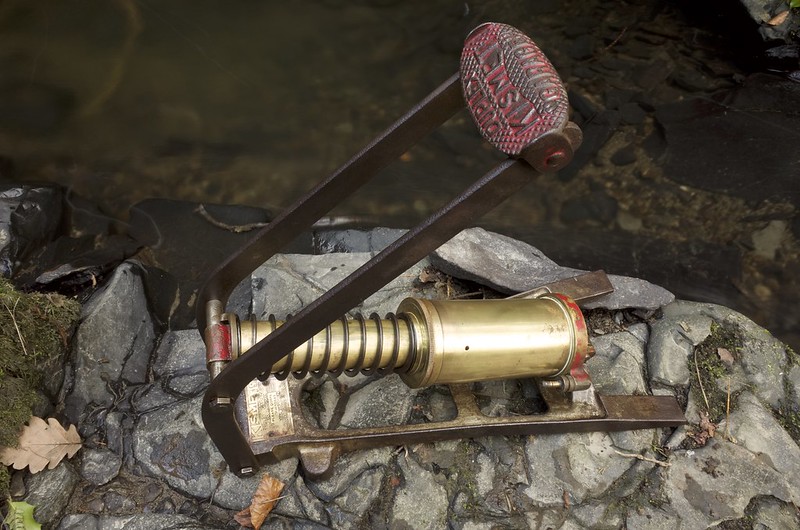 Kismet Duplex Garage by Rhyolith, on Flickr
Kismet Duplex Garage by Rhyolith, on Flickr
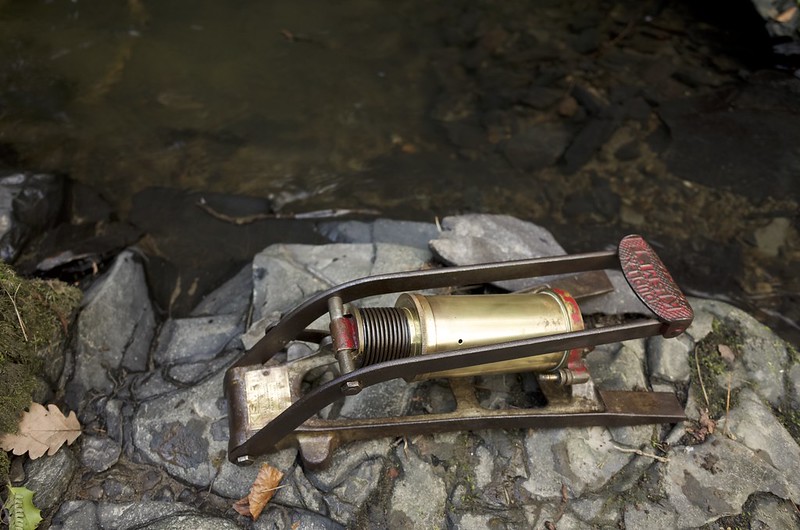 Kismet Duplex Garage by Rhyolith, on Flickr
Kismet Duplex Garage by Rhyolith, on Flickr
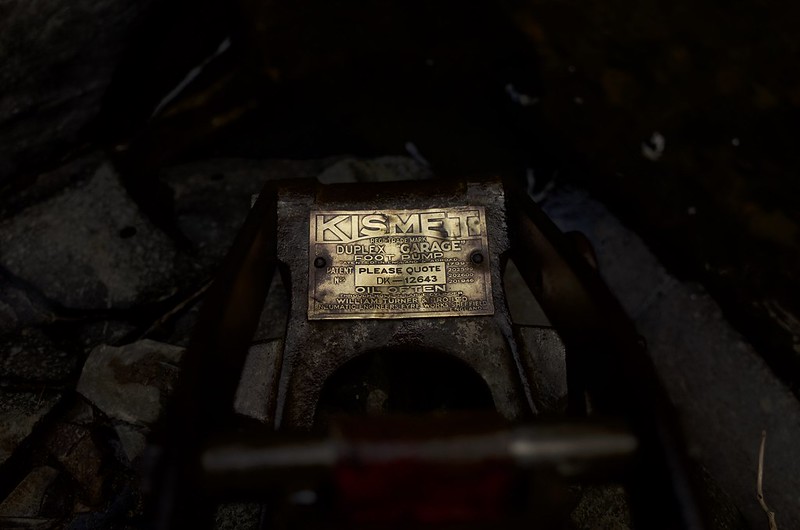 Kismet Duplex Garage (infomation plate) by Rhyolith, on Flickr
Kismet Duplex Garage (infomation plate) by Rhyolith, on Flickr
Like the Kismet Master pumps of this model are thought to have played a roll in the Battle of Britain, pressuring the pneumatic systems of airplanes, such as the mechanisms that fired the guns.
Dating it is difficult, however I can make an educated guess: The earliest models of Kismet pumps seem to have shorter names, e.g. early model: Kismet Duplex, later model: Kismet Duplex Master (both are the same pump). This Garage pump is marked "Kismet Duplex Garage" oppose to just "Kismet Garage", so its a later model. At some point a Mk2 version of this pump came out, which has several notable design changes and is identical to the Dunlop Giant (the only foot pump which is larger). I am guessing this occurred after WW2, this guess is backed up by the fact I have a Dunlop Giant (see below) which the styling of and general wear makes me think 1950s. As it has no obvious government or military marks its probably is not a WW2 model, it also appears to have been painted with silver base and red decals (pedal and cylinder parts) which is a civilian colour scheme. The silver base seems to be common in the older (1920s) Kismet's and I have not yet see it on post WW2 pumps. So my guess is that its 1930s.
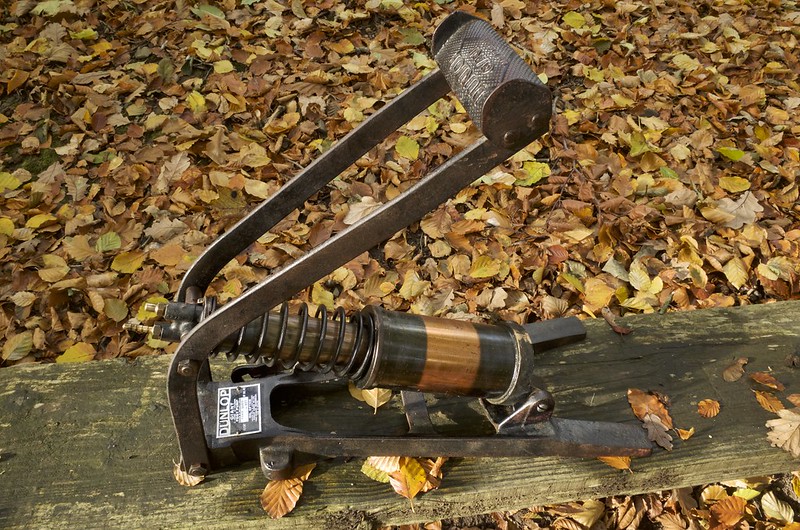 Dunlop Giant by Rhyolith, on Flickr
Dunlop Giant by Rhyolith, on Flickr
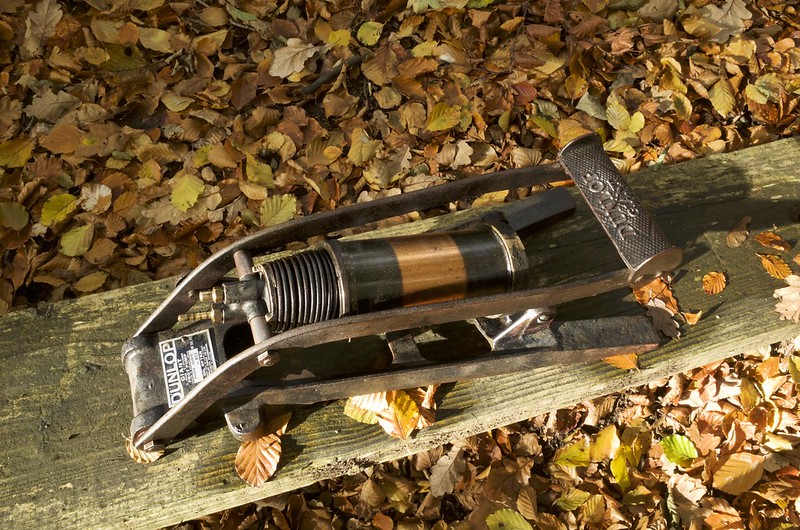 Dunlop Giant by Rhyolith, on Flickr
Dunlop Giant by Rhyolith, on Flickr
A extra nice thing about this one is it still has its original box!
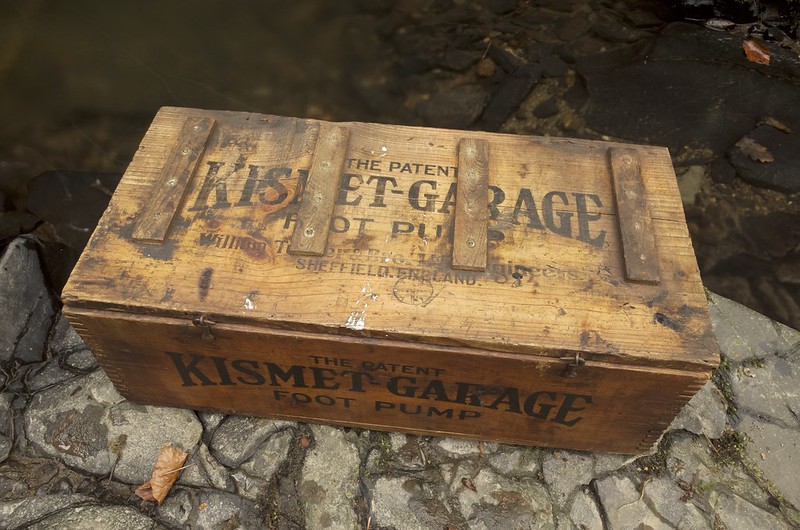 Kismet Duplex Garage (box) by Rhyolith, on Flickr
Kismet Duplex Garage (box) by Rhyolith, on Flickr
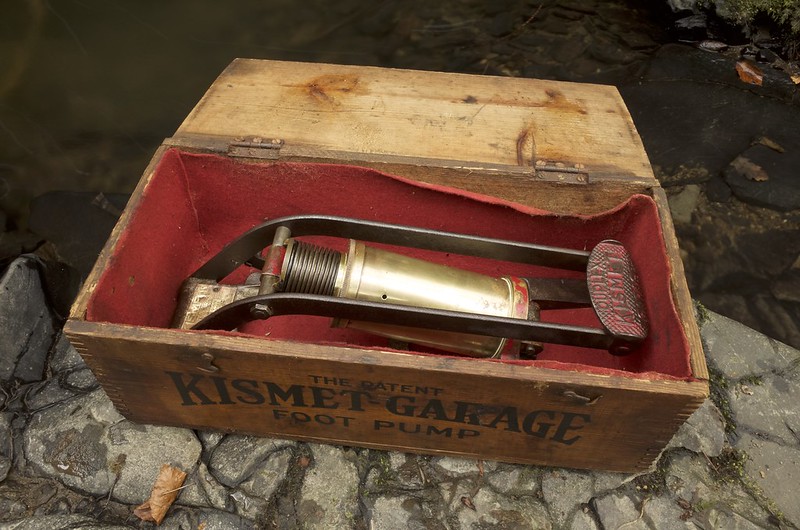 Kismet Duplex Garage (in box) by Rhyolith, on Flickr
Kismet Duplex Garage (in box) by Rhyolith, on Flickr
The box has the company guarantee on both ends: “This pump is unconditionally guanteed for an unlimited peroid against defects in workmanship and material: in addition repairs necessitated by fair wear and tear with in 3 years of purchase date will be executed free of charge. The rubber tubing being exluded except as to flaw. Provided that it be returned carriage paid our works with claim quoting serial numbers.”
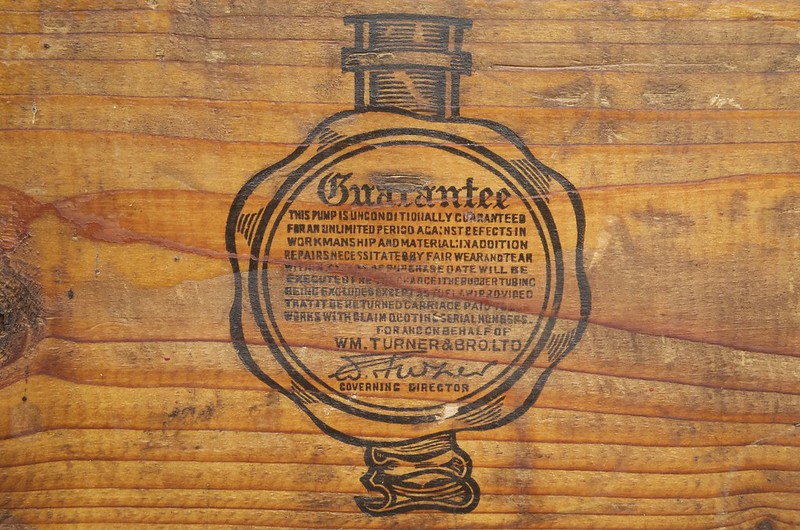 Kismet Duplex Garage (guarentee) by Rhyolith, on Flickr
Kismet Duplex Garage (guarentee) by Rhyolith, on Flickr
Took A LOT of brasso to polish up that cylinder! It only needed tow leather valves replacing and now seems to work well, it will get round to testing it at high pressure at some point, to see if it really can get to 300+psi.
 Kismet Duplex Garage by Rhyolith, on Flickr
Kismet Duplex Garage by Rhyolith, on FlickrIt makes sense given the name that these where used for fill the roll and powered compressor now does in many garages, sacrificing mobility for pumping capacity. As I am guessing that the ability to get tyres pumped up quickly is desirable for a commercial garage, while the lack of mobility does not really matter as the pump probably sat in the same place or on a trolly.
It has the same "duplex" internal layout as the Kismet Master, that being on cylinder inside the other allowing for higher pressures to be achieved (everything from 300-600psi is claimed by various sources). The Air is draw into a large external cylinder first, then that air (which is already pressurised) is sucked into a second smaller cylinder and compressed again. Its a powerful system that was used in a number of top-of the line foot pumps in the first half of the 20th century.
 Kismet Duplex Garage by Rhyolith, on Flickr
Kismet Duplex Garage by Rhyolith, on Flickr Kismet Duplex Garage by Rhyolith, on Flickr
Kismet Duplex Garage by Rhyolith, on Flickr Kismet Duplex Garage (infomation plate) by Rhyolith, on Flickr
Kismet Duplex Garage (infomation plate) by Rhyolith, on FlickrLike the Kismet Master pumps of this model are thought to have played a roll in the Battle of Britain, pressuring the pneumatic systems of airplanes, such as the mechanisms that fired the guns.
Dating it is difficult, however I can make an educated guess: The earliest models of Kismet pumps seem to have shorter names, e.g. early model: Kismet Duplex, later model: Kismet Duplex Master (both are the same pump). This Garage pump is marked "Kismet Duplex Garage" oppose to just "Kismet Garage", so its a later model. At some point a Mk2 version of this pump came out, which has several notable design changes and is identical to the Dunlop Giant (the only foot pump which is larger). I am guessing this occurred after WW2, this guess is backed up by the fact I have a Dunlop Giant (see below) which the styling of and general wear makes me think 1950s. As it has no obvious government or military marks its probably is not a WW2 model, it also appears to have been painted with silver base and red decals (pedal and cylinder parts) which is a civilian colour scheme. The silver base seems to be common in the older (1920s) Kismet's and I have not yet see it on post WW2 pumps. So my guess is that its 1930s.
 Dunlop Giant by Rhyolith, on Flickr
Dunlop Giant by Rhyolith, on Flickr Dunlop Giant by Rhyolith, on Flickr
Dunlop Giant by Rhyolith, on FlickrA extra nice thing about this one is it still has its original box!
 Kismet Duplex Garage (box) by Rhyolith, on Flickr
Kismet Duplex Garage (box) by Rhyolith, on Flickr Kismet Duplex Garage (in box) by Rhyolith, on Flickr
Kismet Duplex Garage (in box) by Rhyolith, on FlickrThe box has the company guarantee on both ends: “This pump is unconditionally guanteed for an unlimited peroid against defects in workmanship and material: in addition repairs necessitated by fair wear and tear with in 3 years of purchase date will be executed free of charge. The rubber tubing being exluded except as to flaw. Provided that it be returned carriage paid our works with claim quoting serial numbers.”
 Kismet Duplex Garage (guarentee) by Rhyolith, on Flickr
Kismet Duplex Garage (guarentee) by Rhyolith, on FlickrTook A LOT of brasso to polish up that cylinder! It only needed tow leather valves replacing and now seems to work well, it will get round to testing it at high pressure at some point, to see if it really can get to 300+psi.

































